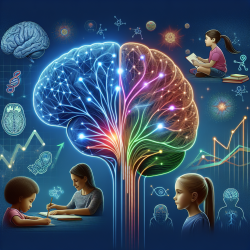Introduction: The Significance of the DSM in Psychiatry
The Diagnostic and Statistical Manual of Mental Disorders (DSM) is a cornerstone in the field of psychiatry, serving as a comprehensive guide for the classification and diagnosis of mental disorders. Its evolution over the years reflects significant shifts in the understanding and conceptualization of mental health. This blog explores the historical context and implications of the DSM's development, as outlined in the research article "A Brief Historicity of the Diagnostic and Statistical Manual of Mental Disorders: Issues and Implications for the Future of Psychiatric Canon and Practice" by Kawa and Giordano (2012).
The Evolution of the DSM: Key Changes and Implications
The DSM has undergone numerous revisions since its inception, each reflecting advancements in psychiatric knowledge and changes in societal attitudes towards mental health. Key changes include:
- DSM-III Revolution: Introduced in 1980, this edition marked a paradigm shift by adopting a more descriptive, symptom-based classification system, moving away from psychodynamic etiological explanations.
- Medicalization Trend: Subsequent editions have increasingly aligned with the medical model, incorporating biological data and emphasizing the somatic aspects of mental disorders.
- Expansion of Categories: The DSM has progressively expanded its categories, reflecting a broader understanding of mental health conditions and their complexities.
Implications for Practitioners: Enhancing Skills and Outcomes
Understanding the evolution of the DSM is crucial for practitioners, especially those working with children. Here are some ways to leverage this knowledge:
- Stay Informed: Keeping abreast of changes in the DSM helps practitioners apply the most current and evidence-based diagnostic criteria, ensuring accurate assessments.
- Tailor Interventions: By understanding the nuanced classifications, practitioners can better tailor interventions to meet the specific needs of each child, enhancing therapeutic outcomes.
- Collaborate with Peers: Engaging in discussions with colleagues about DSM updates fosters a collaborative approach to problem-solving and innovation in therapeutic practices.
Encouraging Further Research and Inquiry
The ongoing evolution of the DSM highlights the importance of continuous research and inquiry in the field of psychiatry. Practitioners are encouraged to engage in further research to explore the implications of DSM changes on their practice. This proactive approach not only enhances individual skills but also contributes to the broader field of mental health.
To read the original research paper, please follow this link: A brief historicity of the Diagnostic and Statistical Manual of Mental Disorders: Issues and implications for the future of psychiatric canon and practice.










